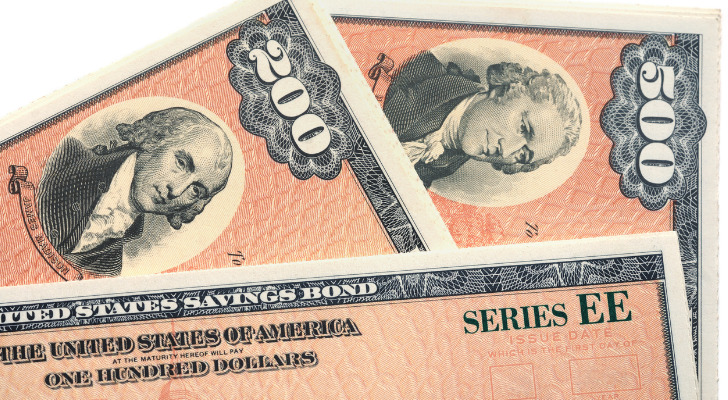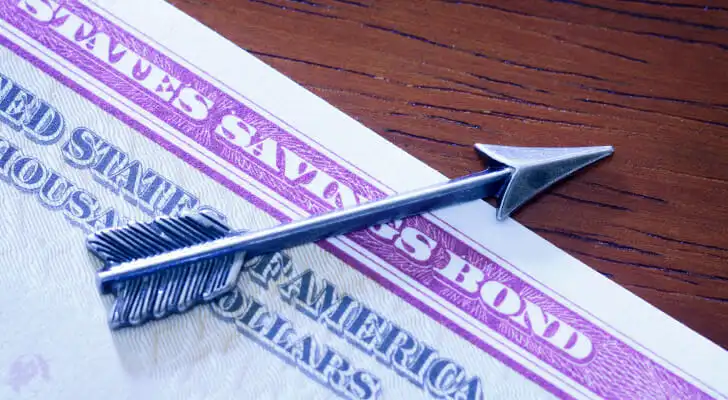Savings bonds offer a way to start investing in a particularly low-risk, low-cost fashion — making them the favorite investment vehicle of grandparents and grandchildren everywhere. Savings bonds are easy to buy from the U.S. Treasury and reach maturity after 30 years. The two types of bonds currently being sold, Series EE and Series I, have different timing considerations, however. Here’s a guide to savings bond maturities and important dates.
For help with savings bonds and other investment queries, consider working with a financial advisor.
Bond Type Basics
The first U.S. savings bonds went on sale in 1935 as a way to encourage saving during the Depression. The first bonds were Series A and sold for $25. Since then, the government has issued many other types of savings bonds, all named after letters of the alphabet.
Today, two series of bonds are still sold, the Series EE and Series I. They are both popular for people saving for long-term goals such as education and retirement. Many are also given as gifts.
Both types of bonds are sold at face value, meaning a $100 bond sells for $100. The minimum purchase for each is $25 and an individual buyer can put up to $10,000 each year into each series of savings bonds. Plus, taxpayers can buy another $5,000 in Series I bonds each year using a tax refund.
Savings bonds can only be purchased directly from the U.S. Treasury. And they are non-marketable, meaning they can’t be sold or traded. There is no secondary market for savings bonds.
Series EE bonds can only be purchased electronically, using Treasury Direct, and exist only in digital form. Series I bonds can also be purchased electronically through Treasury Direct or by using an IRS tax refund. In that case, Series I bond buyers can receive a paper bond.
Savings bonds of either type earn interest monthly. Semiannually, interest is compounded, so the interest also earns interest. Although the interest rates are modest compared to riskier investments such as corporate bonds, savings bond investors pay no state and local income taxes.
Here are more maturity-related differences and similarities between these savings bonds.
Series EE Bonds

Series EE bonds earn a fixed interest rate for the life of the bond. The Treasury Department sets and announces the rate for new bonds in May and November. Bonds bought from November 2021 to April 2022 earn annual interest of 0.1%.
The first important date for Series EE buyers is the first anniversary of the purchase. This is the earliest that bonds can be cashed in. The 12-month redemption limit means savings bonds are best for intermediate-to-long-term financial goals.
The second date occurs five years after purchase. This is the earliest bonds can be cashed in without penalty. A buyer who cashes in before five years loses the last three months of interest. That is, a bond cashed in after 36 months pays only 33 months of interest.
The next date of interest occurs at 20 years. An unusual feature of Series EE is that bonds carry a guarantee that, after 20 years, they will be worth twice the face value. If necessary, the Treasury Department will make a one-time adjustment to the interest to make that happen.
After 30 years, the bonds have reached final maturity. After this date, bonds no longer earn interest. Digital bonds are automatically cashed in at this point. Holders of older paper bonds, which were available for sale until 2012, don’t have to cash them in at full maturity. Bonds of any series can be cashed in anytime, no matter how old. However, after they stop earning interest bond holders risk losing value due to inflation.
Series I Bonds

Series I bonds earn a combined interest rate consisting of a fixed rate plus an inflation rate that is adjusted twice a year. For instance, the Series I bonds sold from November 2021 through April 2022 paid a combined initial interest rate of 7.12%.
This rate includes fixed interest rate of 0.00% on the Series I bonds sold during that period. The inflation-adjustment of 7.12% annually reflects the relatively high inflation that prevailed during 2021. That may be adjusted lower or higher at the next semiannual adjustment.
Series I bonds have the same one-year minimum initial holding period as Series EE bonds. Series I bonds also have a three-month interest penalty if cashed before the five-year mark. However, unlike Series EE bonds there is no guarantee Series I bonds will double in value after 20 years.
At 30 years, Series I bonds reach final maturity and stop earning interest. At this point, digital Series I bonds get cashed automatically. Holders of paper bonds purchased with tax refunds can cash them in at that time or later. Mature Series I bonds that no longer earn interest may lose value due to inflation, however.
Bottom Line
U.S. saving bonds make low-cost, low-risk savings vehicles for investors working toward long-term financial goals. The Treasury Department currently sells two types of savings bonds. Series EE bonds earn fixed interest for 30 years and are guaranteed to double in value after 20 years. Series I savings bonds earn rates adjusted for inflation but also mature and stop earning interest after 30 years.
Investment Tips
- For help with savings bonds or any other investments, consider working with a professional. Finding a qualified financial advisor doesn’t have to be hard. SmartAsset’s free tool matches you with up to three financial advisors who serve your area, and you can interview your advisor matches at no cost to decide which one is right for you. If you’re ready to find an advisor who can help you achieve your financial goals, get started now.
- For a look into the possible future of your investments, use SmartAsset’s free investment calculator.
Photo credit: ©iStock.com/DNY59, ©iStock.com/jetcityimage, ©iStock.com/NoDerog
